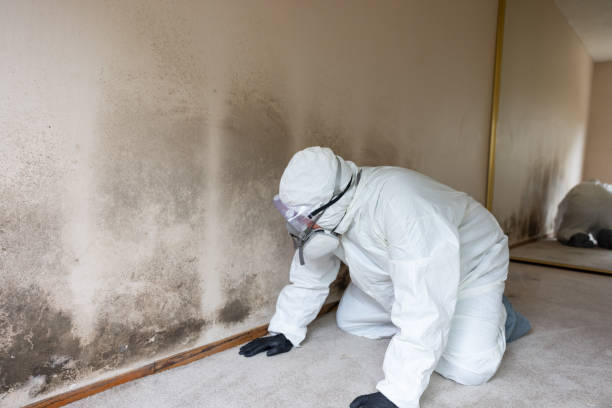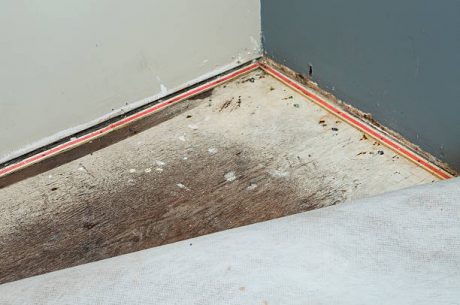Table of Contents
When you discover mold in your home, panic sets in quickly. You’ve probably heard about ozone generators as a potential solution, but does ozone kill mycotoxins effectively enough to protect your family’s health? This question has become increasingly important as more homeowners consider DIY alternatives to professional mold remediation.
The short answer might surprise you: while ozone can eliminate some mold spores on surfaces, it falls dramatically short when dealing with mycotoxins—the toxic substances produced by mold that pose serious health risks. Understanding this distinction could save you thousands of dollars in repeated treatments and protect your family from ongoing exposure.
Let’s explore the critical differences between ozone treatment and professional mold remediation so you can make an informed decision about your home’s safety.
Understanding Mycotoxins: Why They’re Different From Mold
Before we dive into whether ozone works, you need to understand what mycotoxins actually are.
Mold is a living organism—a fungus that grows in colonies. Mycotoxins, however, are the toxic chemical compounds that certain molds produce as byproducts. Think of it this way: mold is the factory, and mycotoxins are the dangerous chemicals it manufactures.
According to the Centers for Disease Control and Prevention, mycotoxins can cause serious health problems including respiratory issues, neurological symptoms, immune system suppression, and even cancer with prolonged exposure. These toxins don’t just disappear when mold dies—they remain on surfaces, embedded in materials, and circulating through your air.
This is where the ozone question becomes crucial.
How Ozone Generators Actually Work
Ozone generators produce O3 molecules—a highly reactive form of oxygen. These machines convert regular oxygen (O2) into ozone through electrical discharge or UV light. The theory sounds promising: ozone oxidizes organic materials, including mold spores, breaking down their cellular structure.
Many companies market ozone generators as powerful mold killers, and they’re partially right. Ozone can kill mold spores it directly contacts on hard surfaces. But here’s the problem most homeowners don’t realize.
Does Ozone Kill Mycotoxins Effectively? The Scientific Reality
The uncomfortable truth is that ozone’s effectiveness against mycotoxins is severely limited. Research published in the Journal of Environmental Health reveals several critical limitations:
Mycotoxins are incredibly stable compounds. Unlike living mold cells, these toxic molecules don’t have biological structures that ozone can easily disrupt. They’re chemical compounds designed by nature to persist in the environment.
Surface-only treatment. Ozone cannot penetrate porous materials like drywall, wood, or insulation where mycotoxins accumulate. It only affects what’s on the immediate surface, leaving toxins embedded deeper in materials completely untouched.
No removal occurs. Even when ozone chemically alters some mycotoxins on surfaces, it doesn’t remove them from your home. Dead mold and altered toxins remain exactly where they were, continuing to affect indoor air quality.
5 Critical Problems With Using Ozone for Mold Remediation
1. Health Hazards During Treatment
Does ozone kill mycotoxins effectively without creating new dangers? Unfortunately, no. The Environmental Protection Agency warns that ozone concentrations high enough to potentially affect mold are also dangerous to humans and pets.
You must evacuate your home during treatment, and even after treatment, ozone can react with household chemicals to create harmful byproducts.
2. Hidden Mold Goes Untreated
Mold grows in walls, under flooring, in HVAC systems, and other hidden spaces. Ozone cannot reach these areas effectively, meaning the source of your problem continues growing while you think you’ve solved it.
3. Material Damage
The same oxidizing properties that target mold also damage your belongings. Ozone degrades rubber, corrodes metals, fades fabrics, and damages electronics. That expensive treatment might cost you even more in damaged possessions.
4. Temporary Results
Even when ozone kills surface mold, it doesn’t address moisture problems—the root cause of mold growth. Within weeks or months, mold returns because the conditions that allowed it to grow remain unchanged.
5. No Professional Assessment
When you rely on ozone, you miss the crucial inspection phase that identifies the full extent of contamination, moisture sources, and structural damage. You’re essentially treating symptoms without diagnosing the disease.
Professional Mold Remediation: The Comprehensive Solution
So if the answer to “does ozone kill mycotoxins effectively” is largely no, what’s the alternative?
Professional mold remediation follows protocols established by the Institute of Inspection, Cleaning and Restoration Certification (IICRC) and addresses every aspect of mold contamination.
Complete Assessment
Certified technicians use moisture meters, thermal imaging, and air quality testing to identify all affected areas—including spaces you can’t see. This prevents the common problem of treating visible mold while missing the larger hidden problem.
Source Elimination
Professionals don’t just kill mold; they remove contaminated materials that cannot be salvaged. Drywall, insulation, and other porous materials that harbor mycotoxins are physically removed from your property.
Advanced Cleaning Protocols
For salvageable surfaces, professionals use HEPA filtration systems, antimicrobial treatments, and specialized cleaning agents that actually remove mycotoxins rather than just attempting to neutralize them.
Moisture Control
The critical difference: professionals identify and fix the moisture problem causing mold growth. Whether it’s a hidden leak, poor ventilation, or water intrusion, addressing the root cause prevents recurrence.
Air Scrubbing
Industrial-grade HEPA air scrubbers capture mold spores and mycotoxins from the air, preventing cross-contamination to unaffected areas during remediation.
Verification Testing
After remediation, professionals conduct clearance testing to verify that mold levels have returned to normal and your home is safe for reoccupancy.
When Ozone Might Have Limited Use
To be fair, ozone isn’t completely useless in mold situations. Some professionals use ozone as one small component of a comprehensive remediation plan—specifically for odor control after all contaminated materials have been removed and surfaces cleaned.
But this represents perhaps 5% of the overall remediation process. Does ozone kill mycotoxins effectively as a standalone solution? The evidence clearly says no.
The Cost Comparison: Cheap Now vs. Expensive Later
Ozone generators rent for around $100-300 per day or can be purchased for $500-2,000. Professional mold remediation typically costs $1,500-$7,000 depending on the extent of contamination.
Those numbers make ozone look attractive until you consider:
- Ineffective treatment means recurring mold problems
- Health issues from ongoing mycotoxin exposure
- Damaged possessions from ozone treatment
- Decreased home value from undisclosed mold issues
- Potential liability if you sell your home without proper remediation
Suddenly, professional remediation looks like the economical choice.
Making the Right Decision for Your Home
Does ozone kill mycotoxins effectively enough to protect your family? The scientific consensus is clear: ozone treatment alone is insufficient for addressing mold and mycotoxin contamination.
Your decision should consider:
Health implications. If anyone in your home has respiratory issues, allergies, or compromised immune systems, professional remediation isn’t optional—it’s essential.
Extent of contamination. Small surface mold on non-porous materials might be manageable with proper cleaning. Anything beyond that requires professional intervention.
Legal considerations. Many states require disclosure of mold issues when selling property. DIY treatments that don’t fully address the problem create legal liability.
Long-term costs. Repeated ineffective treatments plus potential health costs far exceed one professional remediation.

What Professional Remediation Looks Like in Practice
When you call certified mold remediation specialists, here’s what happens:
A technician inspects your property, using specialized equipment to detect moisture and hidden mold. They create a detailed remediation plan outlining affected areas, required work, and expected timeline.
During remediation, the affected area is contained with plastic sheeting and negative air pressure to prevent spore spread. Contaminated materials are removed and properly disposed of. Remaining surfaces undergo thorough cleaning with professional-grade antimicrobials.
Throughout the process, HEPA air scrubbers run continuously, capturing airborne contaminants. After cleaning, surfaces are treated with antimicrobial barriers to prevent future growth.
Finally, the moisture source is identified and addressed—whether through repairs, improved ventilation, or dehumidification solutions.
The entire area is then tested to verify successful remediation before containment barriers are removed.

Frequently Asked Questions
How long does ozone treatment take to kill mold?
Ozone generators typically run for 24-48 hours to affect surface mold. However, this doesn’t address mycotoxins in porous materials or hidden mold colonies, meaning the treatment is incomplete regardless of duration.
Can I stay in my house during ozone treatment?
No. The EPA explicitly warns against occupying spaces during ozone treatment. Ozone levels required to potentially affect mold are harmful to humans and pets, causing respiratory irritation and other health issues.
Does ozone kill mycotoxins effectively in air ducts?
Ozone has minimal effectiveness in ductwork because it cannot remove dead mold, mycotoxins, or debris that accumulates in HVAC systems. Professional duct cleaning with HEPA vacuuming and antimicrobial treatment is necessary.
How much does professional mold remediation cost compared to ozone treatment?
While ozone generators cost $100-2,000, professional remediation runs $1,500-7,000 depending on severity. However, professional remediation is typically one-time, while ineffective ozone treatment often requires repetition plus addresses hidden damage ozone misses.
What kills mycotoxins in a house?
Mycotoxins require physical removal rather than killing. Professional remediation removes contaminated porous materials and uses specialized cleaning solutions with HEPA filtration on salvageable surfaces. This combination actually eliminates mycotoxins rather than attempting to neutralize them.
Can mold come back after professional remediation?
Mold can return if moisture problems aren’t addressed. However, professional remediation includes identifying and fixing moisture sources, making recurrence unlikely. In contrast, ozone treatment never addresses root causes, virtually guaranteeing mold returns.
Is there any situation where ozone is appropriate for mold?
Ozone may play a minor role in odor control after complete professional remediation. Some professionals use it as a final step after all contaminated materials are removed and surfaces cleaned. As a standalone treatment, it’s inadequate.
Protect Your Home and Family With Professional Mold Remediation
The question “does ozone kill mycotoxins effectively” has been thoroughly answered: while ozone may kill some surface mold spores, it cannot adequately address mycotoxins or provide comprehensive mold remediation. Your family’s health and your home’s integrity deserve better than an incomplete solution.
PuroClean of Santa Rosa Beach specializes in complete mold damage restoration using industry-leading IICRC protocols and state-of-the-art equipment. Our certified technicians don’t just treat visible mold—we identify hidden contamination, remove affected materials, eliminate moisture sources, and verify safe conditions before returning your property to you.
We understand the stress and concern mold creates. That’s why we offer:
- 24/7 Emergency Response – Mold doesn’t wait for business hours, and neither do we
- Comprehensive Assessment – Advanced detection technology finds all contamination
- Complete Remediation – From containment to cleaning to prevention
- Insurance Assistance – We work directly with your insurance company
- Verified Results – Post-remediation testing ensures your home is safe
Don’t risk your family’s health on incomplete solutions. Does ozone kill mycotoxins effectively enough to protect those you love? The science says no—but professional remediation says yes.
Contact PuroClean of Santa Rosa Beach today for a thorough assessment and permanent mold solution. Your family deserves to breathe easy in a truly healthy home.
Available 24/7/365 | Contact Us Online | Google Business Profile | IICRC Certified | Insurance Preferred | Complete Mold Remediation Solutions



